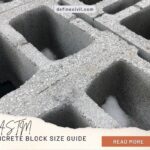Are you looking for ways to revitalize the beauty of worn wood floors? Are you wondering how pros create wooden floors like glass? No one loves to look at a wooden floor that is splintering and falling apart. But not to worry: these easy and simple steps allow you to go DIY way to make your old house wood floors look brand new.
DIY Ways to rejuvenate dull and splintered wooden Floors
All of us love the look and durability of wood floors but nothing lasts forever. These woods are exposed to the scourges of time that would eventually make them look dull, bruised, scuffed-up, scarred and water-damaged. However, a properly installed and maintained wooden floor can last as long as a house.
Are you like me, who don’t like the dull wood floors and doesn’t want to spend thousands of dollars to hire a contractor? If yes, then stay with me because I’m going to make that splintered dull wooden floor look amazingly bright and shiny like day one.
I am pretty much involved in attending work meetings and with these kids running around and a dog scratching the floor while chasing a squirrel – it apparently looks too daunting. In such a muddle, the only way to go at it is a DIY way.
So, don’t worry get up, slip on your old pair of jeans and prepare yourself for hours of hard labor.
Give your old wooden floor a new vigor to shine
Maintaining a wooden floor not only provides an inviting environment but it also adds to the warmth of your home. Your floor would long last and would definitely add value to your home.
So, whether you’re dealing with a floor of a house you just took ownership of or you were previously unconcerned about the floors and now have got the time and insight to go for a refinishing project; this read is equally helpful.
Sand, Stain, and Coat
If you’ve got a floor that is pretty much ugly for a floor restorer; probably you need to refinish it by sanding. Most hardwood floors that are covered with nasty scratches and nicks that go all the way through to the wood; you have no other option but this long haul of sanding.
If you’ve already tried to revive the floor with polishing and it doesn’t help and still, there is uneven coloring along with dullness; don’t lose hope try to refinish it by sanding.
You can actually refinish a quality hardwood floor for as much as ten times before you need to replace it. If you’re confused whether refinishing is worth it or not; let me tell you: replacing is ALWAYS expensive than refinishing your hardwood floors. With proper sanding, you can go as long as 20 years unless things go south.
If you’re confused whether your floor actually needs sanding or merely a good cleaning and polishing is sufficient; here’s a trick. Drop some water on the floor and observe it dispersing or soaking. If it takes some time while soaking, then definitely the floor is in good condition and only polishing would be enough. But if it beads immediately than your floor needs a sanding to refinish.
Here are the supplies you’ll require
- Orbital or Drum Sander
- Edger or Palm Sander
- Vacuum
- Disposal Plastic Gloves, Safety, and Mask
- Rags or Foam brushes for Stain
- Lamb’s Wool applicator
- Tack Cloths
- Stain
- Knee Pads
- Polyurethane Top Coat
Here are the Black Magic steps that would rejuvenate your dull floors and make them look shiny and new
Get Yourself Ready
Before you dive into sanding; look on the floor for staples or nails. If you had enough of them on your floor, then probably the floor is already sanded too many times and it couldn’t handle another sanding.
Remove Carpets and everything
Firstly, if you’re intensive to dust, strap on a dust mask before you pull out the carpet. Slip on a pair of gloves and start detaching the carpet from the tack strip along walls. Start from the corner; just grab the carpet with pliers and pull. To ease up the removal process, fold the carpet into the center of the room into thirds.
After removing the carpet and whatever is on the floor, sink down the exposed nails so that the sander may not get damaged. The next step is to remove the baseboard. You can simply do that by the help of a shim behind the pry bar to avoid damage to the walls. There’s a debate about whether to remove the baseboard or left it as it is. Removing the baseboards before floor refinishes would help you in leveling the finish/color.
While sanding, there is a chance that you could shower everything inside your home with a fine dust of wood. Obviously, newly built sanders are equipped with dust collecting mechanisms owing to the fact that these wood particles are identified as carcinogens. But you should protect yourself and anything else in the way of your room from dust fallout. You can seal up the things with plastic and everything would be fine once we’d finish.
Checking the Depth of Floor
Sanding requires 1/32 inch of wood on your floor’s surface. An engineered hardwood flooring is usually ¾ inches thick. So, with this much thickness, you can refinish your wooden floor up to 5-6 times.
Generally, hardwood flooring only requires to be refinished once every 8-10 years depending on your care as well as your cravings for a glassy floor.
Once your floor has passed the depth test, it’s the time to fill spaces between boards. These gaps are natural due to long-term expansion and contraction of the wooden strips that are butted together.
Filling the Gaps
For gaps that are normal and regular, no repairs are needed. For Irregular and large gaps between the boards, you have to get rid of these before refinishing. These gaps not only look ugly; they can cause drafts as well as energy inefficiency.
If the gaps are less than 5 mm you can use dust and resin fillers. But for gaps in excess, you can insert a color-matching acrylic filler. It’s a simple process but I would not discuss much for this as it is out of the scope of this read.
Sanding on the floor
For sanding, you can either chose to take on rent an orbital sander or drum sander. If you’re slightly confused about what to choose, here is a thumb rule. The orbital sander is a light sander that is best for the dummies and where you don’t want to take a chance of ruining your flooring.
As it doesn’t grind off much of wood; so it’s best for removing the finish and dirt only. If you opt to go for orbital sander than there are two things that can annoy you. One is its slow speed while the other is the dust – a lot more than a drum sander.
Drum sander, on the other hand, is quite rough. It can remove thick layers of wood and can even re-level uneven floors because of its cutting force rather than simple grinding. It is much quicker in finishing the job owing to its rapid rotating belt.
But you should be very careful in putting your hands on this machine because in a fraction of seconds you can ruin your DIY woodworking career.
You should sand your hardwood floors in three steps with progressively lighter grit sandpaper. Start out with coarser sandpaper (30 to 46 grit) and work yourself to lighter grit sandpaper of 80-100 grit in the last step.
Make sure you’ve got your eyes protected by eye protection and a dust mask to protect your lungs. Make sure the dust bag is there to capture the dust. The best place to start is actually a low visibility area or farthest corner from the door. After starting, immediately begin moving along the grain row by row and avoid to sit in one spot because other you can get gouges or swirl marks.
After reaching the end of the room, move over and pull back with slight overlap with the first pass. Continue this sanding along the edges as close as possible.
Around the hard-to-reach spots like wall edges and corners, where drum or orbital sander couldn’t hit, use an edge sander. A rented edger from a local hardware store can do best. The edging should blend well with the rest of the floor. If you use edger, you still will get the dark parts right in the sharp corners. The edger is circular and can’t work itself out through those squared-off spaces. For such sharp corners and places like door jams, you can use a palm sander to finish up corners.
After completing the first pass of sanding, vacuum thoroughly every inch of your room where dirt can have a reach. Examine your wood floor for any gouges or holes; if any you can fill them with a matching wood filler/putty.
A tip: you need to keep track of the areas where you’ve sanded and you can use a light pencil to mark the edges and once you’ll sand they marks would be lost.
After the rough sanding, the next sand is with 50-60 medium grit sandpaper. Load this sandpaper in the sander and work yourself through the floor exactly the same manner as the coarse sanding. Repeat the vacuuming and filling till the final sanding.
For final sanding, load the sander with a fine grit of 100-120 and finish off all the areas of the floor uniformly. After you’ve done the sanding; thoroughly vacuum the room in a way that no dust could be found anywhere on the floor. You can get help from a tack cloth attached with a suffer mops.
Staining the Floor
Now that you’ve got your wooden floor completely sanded down to its natural state, you need to bruise it with a stain or a sealant. You can choose a water-based or an oil-based stain depending on your needs. You can go for a colored stain if you think it would enhance the color of the wood.
Before applying the stain, make sure the windows and doors are wide open to let the fresh air come in and ventilate while you’re playing with stains. Put on plastic disposable gloves to avoid sticky stains on your hands.
For applying the stain, you can either use a lamb’s wool applicator or simple old shirt rags. Slightly dab the applicator in the stain and drag it back towards yourself while pressing it down. Never try to go for circular motions or go back and forth it would result in uneven coloring.
Once you’re finished with first coat leave it for 5 to 10 minutes and wipe the excess stain. In most of the cases, a single coat is enough but if you need a dark render you can apply a second coat but avoid blemished finish as a result of excess coats.
Allow the stain to dry overnight and don’t allow one to go near it as you’d never like to have a permanent footprint on the floor.
Applying the clear Top Coat Polly
Before going for a poly, make sure your room is well ventilated and well lit because otherwise, you’d always be guessing which areas you have applied and where you didn’t. it had a strong odor so be prepared for it. Close the heaters of all the rooms in the house and evacuate kids and even pets for dry-time of 12-24 house.
There’re both oil-based and water-based polys available in the market. The oil-based are though as less durable than oil-based but the fact of the matter is that newer brands when applied properly are even more durable as an oil-based. Oil based poly gives you an amber hue, while the water-based is crystal.
Based on your selection of polytype; you must be very careful about drying and curing. A water-based poly can be walked with socks on after 4-6 hours but each coat of a water-based poly requires at least 24 hours of dry time.
Whatever type you choose, the process of application is similar to that used for the application of stain. You can use a lambswool applicator. Depending on the results you achieve you can go for 3-4 coats of the poly.






![Engineering Communication by Knisely [PDF] [FREE DOWNLOAD]](https://definecivil.com/wp-content/uploads/2021/05/Editorial-Markup-Stop-Start-Continue-Brainstorm-Presentation-100x100.jpg)












